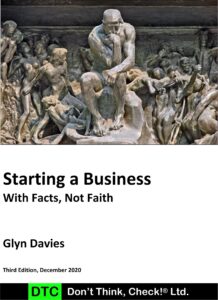The term halo effect was first used by E. A. Thorndike in 1920 (O’Neal & Mills, 1969), and refers to our error of logic of attributing characteristics to objects or people based on irrelevant traits, such as assuming one person is more intelligent than another due to the former being more attractive. The halo effect is similar to attribution errors such as assuming that a person who trips over a floor rug is clumsy as opposed to the floor rug being out of place.
Attribution errors such as the halo effect are, or at least should be, of great interest since they represent errors of judgment from which decisions flow. Decisions such as hiring employees should be based on merit, not attributes such as attractiveness or height, especially if such attributes are not material to the role.
If there is a risk of being influenced by the halo effect we could assume that most reasonable people would like to know and mitigate against it. However it may not be that simple. Halo effects are often unnoticed, and forewarning people about the risk of the halo effect does not diminish the effect, even when people are motivated to avoid it as the “halo effect appears to be quite robust and does not seem to be under conscious control.” (Wetzel, Wilson, & Kort, 1981). It has also been found that the halo effect is likely to be stronger when we anticipate making choices compared to when there is no anticipation (O’Neal & Mills, 1969).
Phil Rosenzwieg’s excellent book The Halo Effect … and the Eight Other Business Delusions That Deceive Managers (Rosenzweig, 2007) analysed the halo effect and other errors of logic and laid bare the faulty research, analysis, and recommendations manifested in many best-selling business books. Many such books are, on closer inspection, works of great storytelling that provide comfort and inspiration to the desperate reader, they should not however be confused with well-researched, unbiased, and accurate accounts of reality; the predictive value of such best sellers is illusory at best.
We are not only susceptible to halo effects created by others, we create them ourselves unwittingly. We are also afflicted with a close relative of self-inflicted halo effects called biases.
It is not so much that we have biases, but that we are blind to them, and that we have the “biased assumption that we are immune to bias” (Frantz, 2006). An example of this problem is a preference towards people we like in conflict situations, regardless of the merits of the positions and behaviours of the various participants. Further, encouraging people to be fair and objective may not be successful as such encouragement has the risk of causing people to more emphatically restate their assumption that from their perspective, they are being fair (Frantz, 2006).
So can we do anything about halo effects and our biases? An obvious suggestion is to be aware that such issues exist and try to valiantly mitigate their effects. But that may be simpler said than done, as halo effects do not seem to be under conscious control (Wetzel, et al., 1981), and we seem to labour under the biased assumption that we are immune to bias (Frantz, 2006).
Halo effects and biases do have a place as a shorthand for interpreting and navigating the world, a useful skill in humankind’s prehistory; we can safely assume that we are not descendants of early humanoids that spent a great deal of time analysing in depth the options when being run down by carnivorous beasts. Halo effects and biases are useful even in today’s various jungles. It does not seem practical to revert back to first principles when trying to make sense of the world, it would be impossible task, with a self-referential cum recursive looping as we analyse the simplest of tasks or objects, and then analyse the basis of that analysis, and of that analysis, … we would never get to the point of synthesising an accurate view with a practical outcome before things changed and we had to start over.
Taming halo effects and biases (and other cognitive disorders) need not be an all-or-nothing struggle; perhaps a hybrid approach is feasible? Of the things that don’t really matter in the scheme of things, such as what to spread on your morning toasted bread, or what shoes to wear to work (I am an Engineer at heart), we can simply maintain our existing habits and remain in automatic-mode and not sweat the details. For things that do matter such as which car to purchase, employee to recruit, or how to provide interpersonal feedback, then perhaps we should more thoroughly analyse the basis for our beliefs, thoughts, and assumptions, in a manner to asking why 5 times (Sakichi Toyoda , Wikipedia). Whether we ask why 4, 5, or 6 times is not really the point. What we need to achieve is a high level of confidence (i.e., a solid foundation) that our judgements are based on an objective assessment of reality, not our filtered and biased interpretation of it, a difficult though not impossible challenge. But all this is easier said than done, as we first have to accept and then discard the perhaps unconscious assumption that we are immune to such errors ourselves, and then we have to have the time, inclination, and energy to do something about it. Best of luck.
Frantz, C. M. (2006). I am being fair: The bias blind spot as a stumbling block to seeing both sides. Basic and Applied Social Psychology, 28(2), 157-167.
O’Neal, E., & Mills, J. (1969). The influence of anticipated choice on the halo effect. Journal of Experimental Social Psychology, 5(3), 347-351. doi: 10.1016/0022-1031(69)90059-6
Wetzel, C. G., Wilson, T. D., & Kort, J. (1981). The halo effect revisited: Forewarned is not forearmed. Journal of Experimental Social Psychology, 17(4), 427-439. doi: 10.1016/0022-1031(81)90049-4



